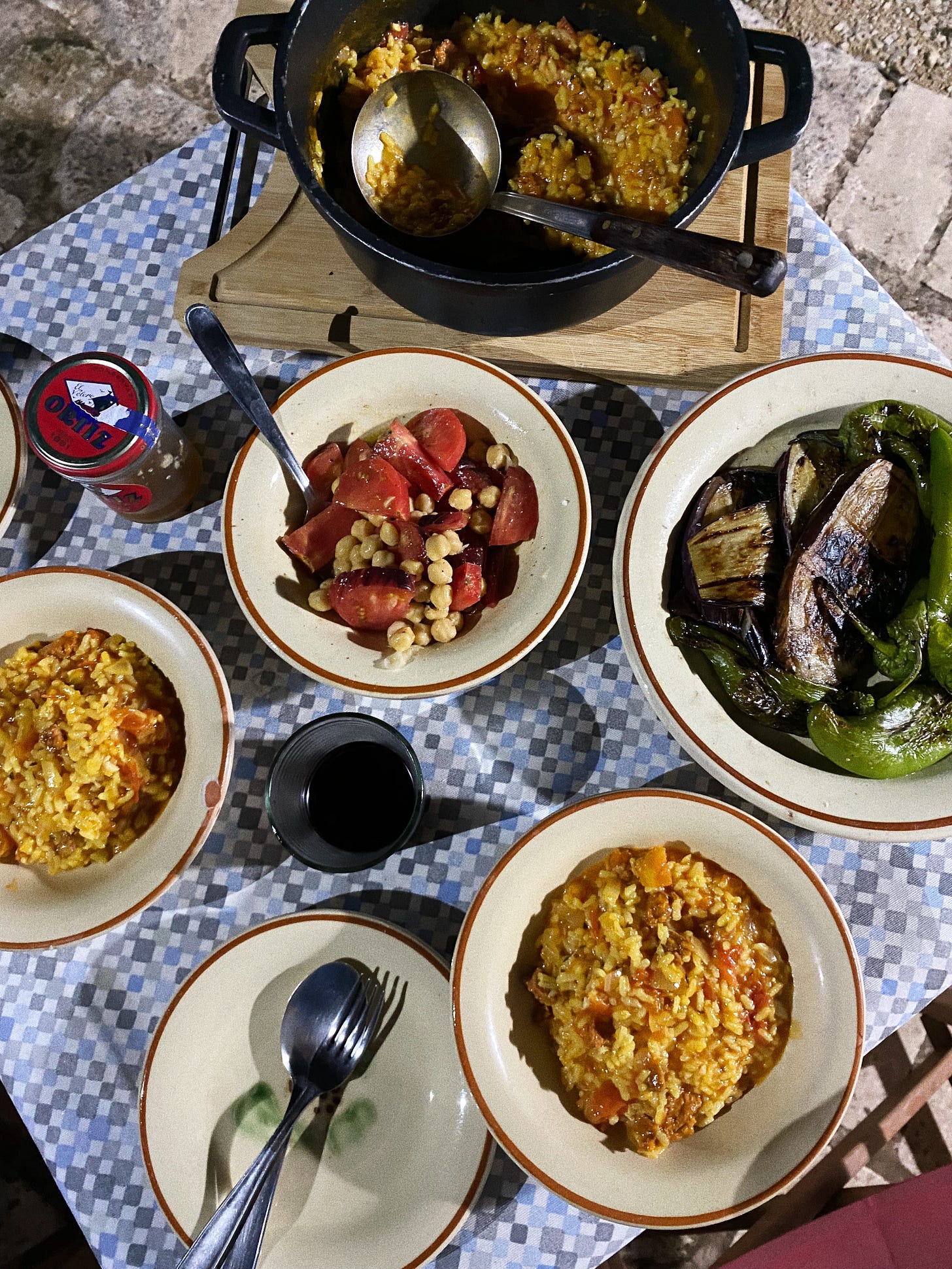Food For Thought.
There is something in the word 'belonging' that makes me focus less on the being, the existing, the actual presence of your identity, and more of the longing, the desire, the yearning to be part of something larger than yourself. I read Jay Caspian King's piece, The Myth Of Asian American Identity, in the New York Times and found myself nodding along to various passages. Namely ones which called out how many of us (I am inserting British Asians as well as Asian Americans here) crucially yearn for whiteness. It's a strange and jarring truth to behold. I am proud to be Korean; but – as my mother often reminds me – I am only half-Korean.
“The identity politics of the modern, assimilated Asian American are focused on getting a seat at the wealthy, white liberal table. Or, if we want to be generous, we fight about food and representation and executive-suite access because we want our children to live without really having to think about any of this — to have the spoils of full whiteness. We, in other words, want to become as white as white will allow.”
At the same time as I hold this pride, I also exist in an ostensibly white, middle class society. I grew up in a nice house just outside of London, attended a private girls school from 3-18, surrounded myself with either white friends, or other Asian kids who perhaps had the same quiet desperation to be white. I never actively eschewed my heritage, although I realise now that at age 30, I have become far more openly proud of it. And that in my younger years, however subtly, I tried to suppress it. To assimilate. To whitewash myself.
Now, food is the way I feel most connected to my Korean heritage. Through my mother, I explore what it means to be from South Korea. I learn this through the nuanced taste of my mother's kimchi. It's one of the reasons why I don't really eat kimchi from anywhere or anyone else. It is more than a taste of home in the broad sense. But of my home. My bodily home. My literal motherland. I love hearing about the traditions and celebrations that often centre around food – Koreans really know how to throw a party – like Jesa, a memorial to ancestors on the anniversary of their death. It's an elaborate effort, the ritual of which is likely not performed too much in modern day Korea (there are nine steps which involve different family members making food offerings). But I love the idea of it – the way food serves as a vehicle for remembrance, for celebration and for family.
My niece just turned one, and the Korean ceremony involves food, family, an inordinately adorable Korean dress and a tradition where various objects representing different professions or futures (stethoscope for a doctor, pencil for a writer, money for wealth) are placed in front of the child, and they are 'asked' to choose one. According to legend (aka Kie-Jo Sarsfield), I chose the pencil, then chewed on it. Which makes me feel like my eventual choice to write about food was perhaps preordained. Ava, my niece, chose a pencil as well. She didn't chew on it, but there's always time to get her into a life of food writing.
Recipes-not-recipes
When we were in Menorca, we ate a lot of tomatoes because they were perfectly in season. And what else is better than a ripe tomato that tastes like summer lightening? I made this rice on our last evening in our little cottage in the middle of the forest, when Andy was prepping a fire outside for our green peppers and aubergines to char on top of. It was perfect. A bottle of fizz, woodfired vegetables, a bubbling pot of rice and a few games of checkers. Sadly our unexpected dinner guest from the night before (a donkey) did not return.
You’ll need:
1 large, very ripe tomato, diced
250g bomba rice
500ml stock
175g chorizo, chopped
1 small white onion, diced
3-4 garlic cloves, crushed then sliced
1/2 large dried chilli, sliced plus its seeds
3 tbsp olive oil
Fresh thyme
3-4 sardines (optional!)
Add the thyme, onion, garlic and chilli to a heavy bottomed pan shimmering with oil on a medium heat. Once they’ve softened, add the chopped chorizo and let the juices bleed and mix with the onion/garlic/chilli. After a few minutes – when the chorizo becomes fragrant – add the tomatoes and pop on the lid for just under 10 minutes so it gets a little saucy. Then add your rice, give it a stir and pour in the stock. Turn the heat up until it starts to bubble then bring it back down and leave with the lid on for about 30 mins. Take the lid off and stir through. Let it keep cooking with the lid off until the rice is soft (I like the rice in this dish a little more tender than to have bite). If you’re into that fishy vibe, I stirred in some Ortiz sardines and a little of its oil. Season to taste. Eat with a chilled glass of Rioja and a sudden urge to tour the Balaerics.
Leftovers.
A dream veg set up from Flamingo Estate
Why is everyone so obsessed with Emily Mariko?
Korean steamed eggs remind me of sick days at home as a kid. Eric Kim’s microwaved version hit the spot.
I only want to cook outdoors, especially at Francis Mallman’s digs
What ever happened to Ronald McDonald though?
Korean storytelling is making waves in the west. The New Yorker on how Squid Game captures the spirit of Korean cinema.




